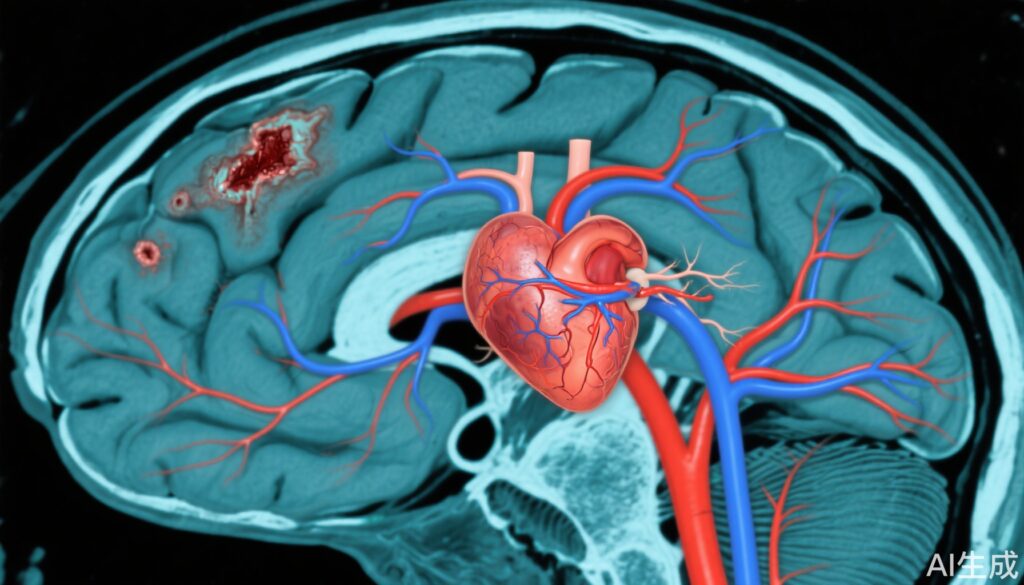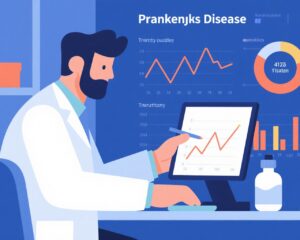Study Background and Disease Burden
Embolic stroke of undetermined source (ESUS) represents a subset of ischemic strokes characterized by embolic features without a clear source upon standard evaluation. It accounts for an estimated 17% of ischemic strokes and poses a significant diagnostic and therapeutic challenge due to heterogeneous embolic sources including cardiac and vascular abnormalities. Determining optimal secondary prevention strategies, particularly regarding antithrombotic treatment (antiplatelet agents versus anticoagulation), remains a critical unmet need, as treatment response can differ based on underlying embolic mechanisms.
Study Design
This multicenter retrospective observational cohort study included 2,328 adult patients admitted for acute ischemic stroke fulfilling ESUS criteria across 27 sites between 2015 and 2024. The cohort was divided based on antithrombotic treatment administered: antiplatelet(s) only or anticoagulation (with or without concurrent antiplatelet therapy). The primary composite outcome included recurrent stroke, major bleeding episodes, or death. Time-to-event analysis utilized adjusted Cox proportional hazard models clustered by site and propensity score (PS) matching strategies—namely inverse probability of treatment weighting (IPTW) and 10:1 nearest-neighbor matching with replacement. Adjustments were made for age, National Institutes of Health Stroke Scale (NIHSS) score representing stroke severity, and presence of potential embolic sources such as left ventricular injury and patent foramen ovale (PFO). Secondary outcomes included each component of the primary endpoint analyzed separately and stratified by embolic source subgroups.
Key Findings
The median age was 65 years (IQR 54–75), with a balanced sex distribution (50% female) and median NIHSS score of 4 (IQR 2–11). Of these, 230 patients received anticoagulation.
Comparative analysis demonstrated no significant difference between anticoagulant and antiplatelet-treated groups in the risk of the primary composite outcome:
– Adjusted Cox model: aHR 1.00 (95% CI 0.69–1.45)
– IPTW model: aHR 1.15 (95% CI 0.79–1.66)
– PS-matched model: aHR 1.00 (95% CI 0.70–1.44)
When stratified by embolic source, anticoagulation was notably beneficial in patients with left ventricular injury:
– Primary composite outcome: aHR 0.35 (95% CI 0.16–0.77; p-interaction <0.01)
– Trend toward reduced recurrent ischemic stroke: aHR 0.22 (95% CI 0.05–1.08; p-interaction = 0.04)
No statistically significant superiority of anticoagulation was observed in patients with other embolic sources, including PFO.
Expert Commentary
These real-world observational data corroborate findings from pivotal randomized clinical trials that failed to show net benefit of anticoagulation over antiplatelet agents for the general ESUS population. However, the emerging signal for improved outcomes with anticoagulation in the subgroup with left ventricular injury suggests a nuanced therapeutic consideration tailored to embolic etiology. This subgroup has historically been underrepresented in ESUS trials, and findings here align with prior smaller cohort studies indicating cardiogenic embolic risk may warrant anticoagulation despite overall neutral trial results.
Limitations include retrospective design, potential confounding despite advanced statistics, and relatively small anticoagulation-treated subgroup size, limiting robustness of subgroup conclusions. Prospective randomized trials targeting ESUS patients with left ventricular injury are warranted to define optimal antithrombotic strategy.
Conclusion
In summary, anticoagulant treatment does not confer a broad clinical advantage over antiplatelet therapy for unselected ESUS patients. However, patients with left ventricular injury may derive meaningful benefit from anticoagulation in reducing recurrent events. These findings underscore the importance of individualized assessment of embolic sources in stroke management. Future targeted trials are essential to refine stratified therapies and improve outcomes in this heterogeneous stroke population.
References
Siegler JE, et al. Outcomes of Patients With Embolic Stroke of Undetermined Source Treated With Antiplatelet Agents or Anticoagulation: A Multicenter Cohort Study. Neurology. 2025 Aug 12;105(3):e213876. doi: 10.1212/WNL.0000000000213876. Epub 2025 Jul 3. PMID: 40609061.


